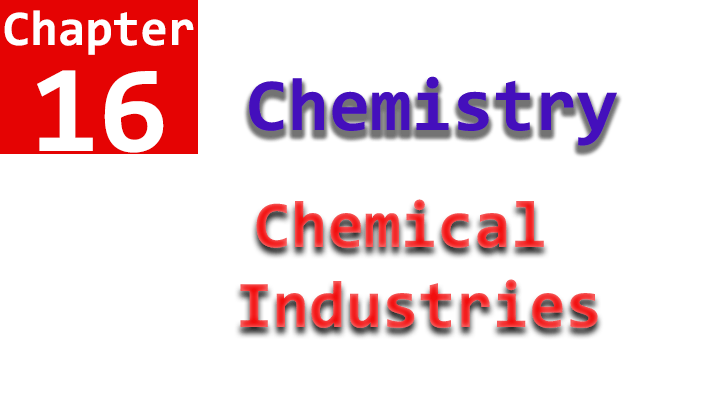Notes of 10th Chemistry Chapter No. 16 Chemical Industries, All Long Questions, Short Questions and MCQ’s.
In Unit No. 16 of the 10th Chemistry curriculum, students will delve into the fascinating world of Chemical Industries. This unit will introduce them to various important processes and operations involved in the production of essential chemical compounds. Throughout this unit, students will acquire a comprehensive understanding of the metallurgical operations, the Solvay process, urea manufacturing, and the fascinating world of petroleum.
Long Questions of Chapter No. 16
Short Questions of Chapter No. 16
MCQ’s of Chapter No. 16
- 10th Class Pak Study Textbook
- 9th and 10th Class General Science Textbook
- Chapter No. 9 Notes 10th Chemistry
- Biology 10th Class Past Papers
- English Past Papers of 10th Class
The learning outcomes for this unit are designed to ensure that students gain a solid grasp of the key concepts and principles related to chemical industries. By the end of this unit, students will be able to:
Describe some metallurgical operations: Metallurgical operations are fundamental in the extraction and refining of metals. Students will explore processes like roasting, calcination, smelting, and refining, which play crucial roles in obtaining metals from their ores.
Make a list of raw materials for the Solvay process: The Solvay process is an essential industrial method for producing sodium carbonate (soda ash). Students will learn about the raw materials required for this process and their significance in the chemical industry.
Outline the basic reactions of the Solvay process: Students will gain an understanding of the chemical reactions involved in the Solvay process, leading to the synthesis of sodium carbonate from sodium chloride and calcium carbonate.
Develop a flow sheet diagram of the Solvay process: A flow sheet diagram visually represents the steps and operations involved in a chemical process. Students will be able to create a detailed diagram outlining the various stages of the Solvay process.
Describe the composition of urea: Urea is a crucial nitrogenous compound used in fertilizers and various other applications. Students will explore the molecular composition and properties of urea.
Develop a flow sheet diagram for the manufacture of urea: Similar to the Solvay process, students will create a flow sheet diagram illustrating the steps involved in the industrial production of urea.
List the uses of urea: Urea has multiple applications in the agricultural, industrial, and healthcare sectors. Students will explore the diverse uses of urea and its importance in different industries.
Define petroleum: Petroleum is a complex mixture of hydrocarbons and a vital energy resource. Students will be introduced to the concept of petroleum and its significance in modern society.
Describe the formation of petroleum and natural gas: Students will learn about the geological processes that lead to the formation of petroleum and natural gas reserves.
Describe the composition of petroleum: Petroleum consists of various hydrocarbons with distinct boiling points. Students will explore the composition of crude oil and its components.
Describe briefly the fractional distillation of petroleum: Fractional distillation is a crucial refining process used to separate petroleum into various fractions based on boiling points. Students will gain an overview of this essential technique.
Through the study of this unit, students will not only gain valuable insights into the chemical industries but also understand their role in meeting the diverse needs of our modern society. The knowledge acquired in this unit will lay a strong foundation for further studies in chemistry and related fields.

